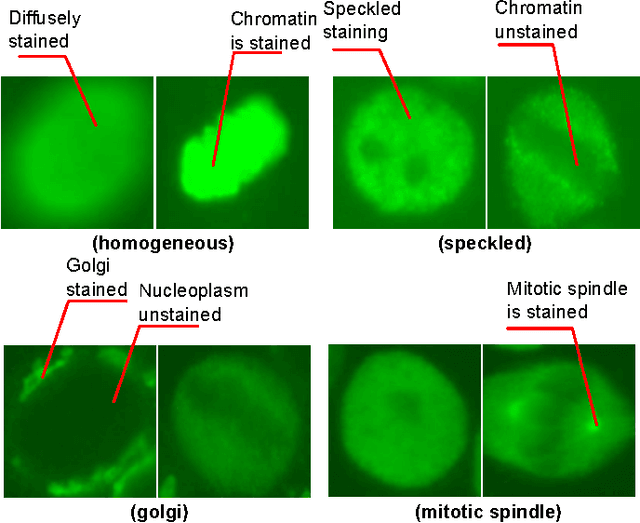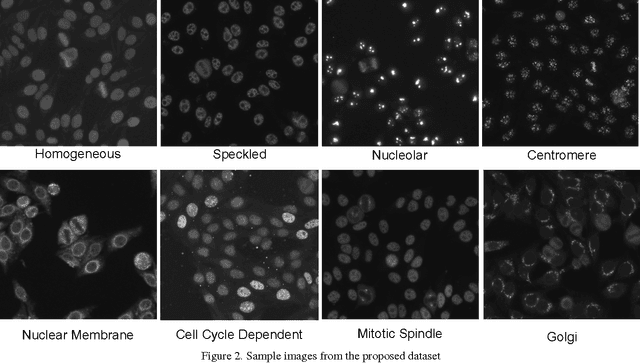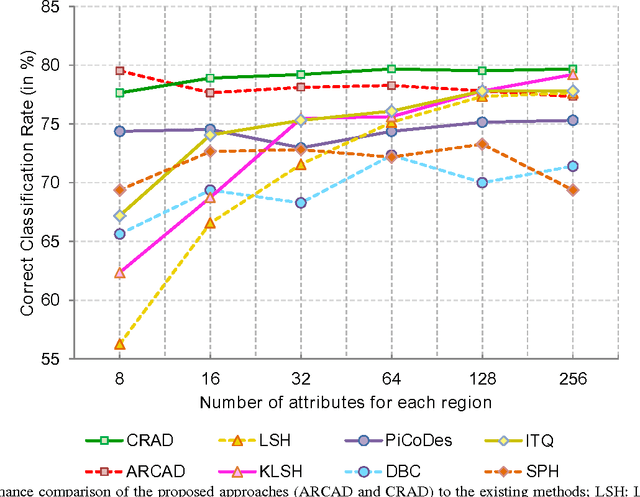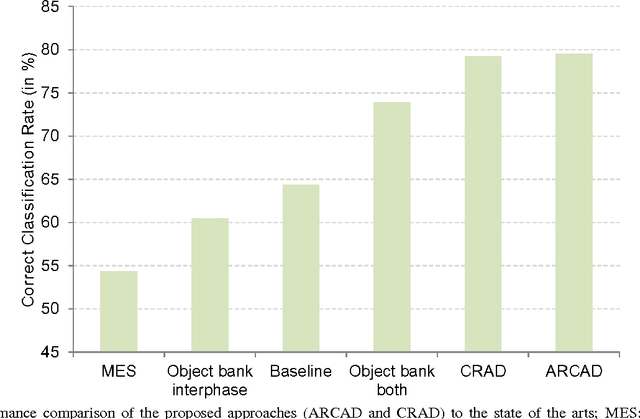Discovering Discriminative Cell Attributes for HEp-2 Specimen Image Classification
Paper and Code
Jul 28, 2014



Recently, there has been a growing interest in developing Computer Aided Diagnostic (CAD) systems for improving the reliability and consistency of pathology test results. This paper describes a novel CAD system for the Anti-Nuclear Antibody (ANA) test via Indirect Immunofluorescence protocol on Human Epithelial Type 2 (HEp-2) cells. While prior works have primarily focused on classifying cell images extracted from ANA specimen images, this work takes a further step by focussing on the specimen image classification problem itself. Our system is able to efficiently classify specimen images as well as producing meaningful descriptions of ANA pattern class which helps physicians to understand the differences between various ANA patterns. We achieve this goal by designing a specimen-level image descriptor that: (1) is highly discriminative; (2) has small descriptor length and (3) is semantically meaningful at the cell level. In our work, a specimen image descriptor is represented by its overall cell attribute descriptors. As such, we propose two max-margin based learning schemes to discover cell attributes whilst still maintaining the discrimination of the specimen image descriptor. Our learning schemes differ from the existing discriminative attribute learning approaches as they primarily focus on discovering image-level attributes. Comparative evaluations were undertaken to contrast the proposed approach to various state-of-the-art approaches on a novel HEp-2 cell dataset which was specifically proposed for the specimen-level classification. Finally, we showcase the ability of the proposed approach to provide textual descriptions to explain ANA patterns.
 Add to Chrome
Add to Chrome Add to Firefox
Add to Firefox Add to Edge
Add to Edge